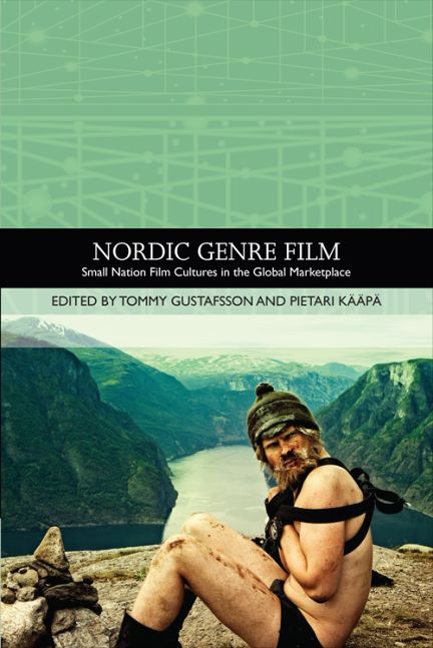Book contents
- Frontmatter
- Contents
- List of Illustrations
- List of Contributors
- Traditions in World Cinema
- Introduction: Nordic Genre Film and Institutional History
- PART I HERITAGE CINEMA AND NATIONAL NARRATIVES
- PART II CRIME AND DETECTIVE NARRATIVES
- PART III NORDIC OPTIMISM: ROAD MOVIES, COMEDIES AND MUSICALS
- PART IV NORDIC HORRORS
- PART V GENRE BENDERS
- 15 A National/Transnational Genre: Pornography in Transition
- 16 Going Hollywood: Nordic Directors in American Cinema
- 17 A Culture of Reciprocity: The Politics of Cultural Exchange in Contemporary Nordic Genre Film
- Index
16 - Going Hollywood: Nordic Directors in American Cinema
from PART V - GENRE BENDERS
Published online by Cambridge University Press: 25 October 2017
- Frontmatter
- Contents
- List of Illustrations
- List of Contributors
- Traditions in World Cinema
- Introduction: Nordic Genre Film and Institutional History
- PART I HERITAGE CINEMA AND NATIONAL NARRATIVES
- PART II CRIME AND DETECTIVE NARRATIVES
- PART III NORDIC OPTIMISM: ROAD MOVIES, COMEDIES AND MUSICALS
- PART IV NORDIC HORRORS
- PART V GENRE BENDERS
- 15 A National/Transnational Genre: Pornography in Transition
- 16 Going Hollywood: Nordic Directors in American Cinema
- 17 A Culture of Reciprocity: The Politics of Cultural Exchange in Contemporary Nordic Genre Film
- Index
Summary
Starting with a historical overview of the presence of Nordic directors in Hollywood, this chapter aims to explore the critical mass of Nordic directorial talents in contemporary American cinema. It interrogates their importance for the transnational dynamism of Nordic cinema outside its normative national borders and reveals how vitally Nordic directors have contributed to an increasingly globalised Hollywood. By configuring Nordic directors within different temporal and categorical groupings, this study charts differences and similarities of ‘Nordic’ stylistic and thematic traits when migrating into Hollywood cinema.
1920s HOLLYWOOD'S SCANDINAVIAN COLONY
Until the 1990s, only the 1920s featured any sustained collective presence of Nordic directors in Hollywood. Three of European silent cinema's greatest artists, Victor Sjostrom, Mauritz Stiller and Benjamin Christensen, immigrated to Hollywood during a decade in which the American film industry first actively courted competing talent from overseas. The Scandinavian film colony in Los Angeles would at its height in the mid- to late 1920s also include actors such as Stiller's protegee Greta Garbo, Einar Hanson, Lars Hanson, Nils Asther, Anna Q. Nilsson, Warner Oland, Jean Hersholt, Anders Randolph and Greta Nissen.
The most ambitiously productive and successful of the Nordic directors in silent Hollywood was Victor Sjostrom, renamed Seastrom in Hollywood, who directed ten features in all at Goldwyn/MGM between 1923 and 1930, including three masterworks, He Who Gets Slapped (1924), The Scarlet Letter (1926) and The Wind (1928). Those three films in particular retain much of the naturalistic power and vision of the director's Swedish masterworks. As Bo Florin has argued, Sjostrom successfully reintegrated many of his Swedish cinema stylistic visual elements (most prominently, his evocative dissolve transitions) into new contexts and narrative conventions. But Florin also states that ‘Although he was regarded as alien and exotic at the beginning, his last works seemed to have turned him into just another Hollywood director’ (Florin 2013: 136). After directing one talkie, A Lady to Love (in both English- and German-language versions) in 1930, Sjostrom returned permanently to Sweden.
- Type
- Chapter
- Information
- Nordic Genre FilmSmall Nation Film Cultures in the Global Marketplace, pp. 230 - 243Publisher: Edinburgh University PressPrint publication year: 2015

